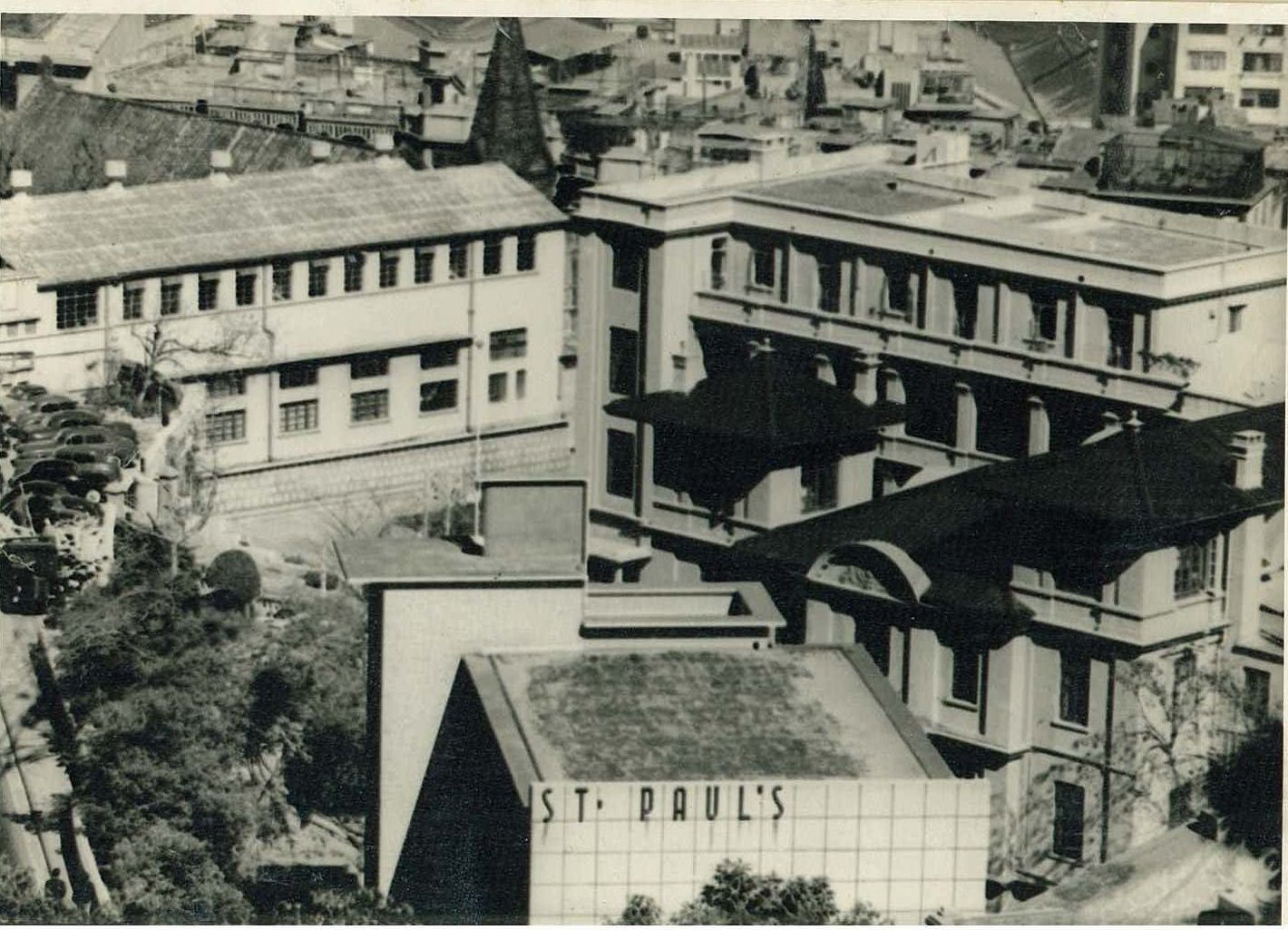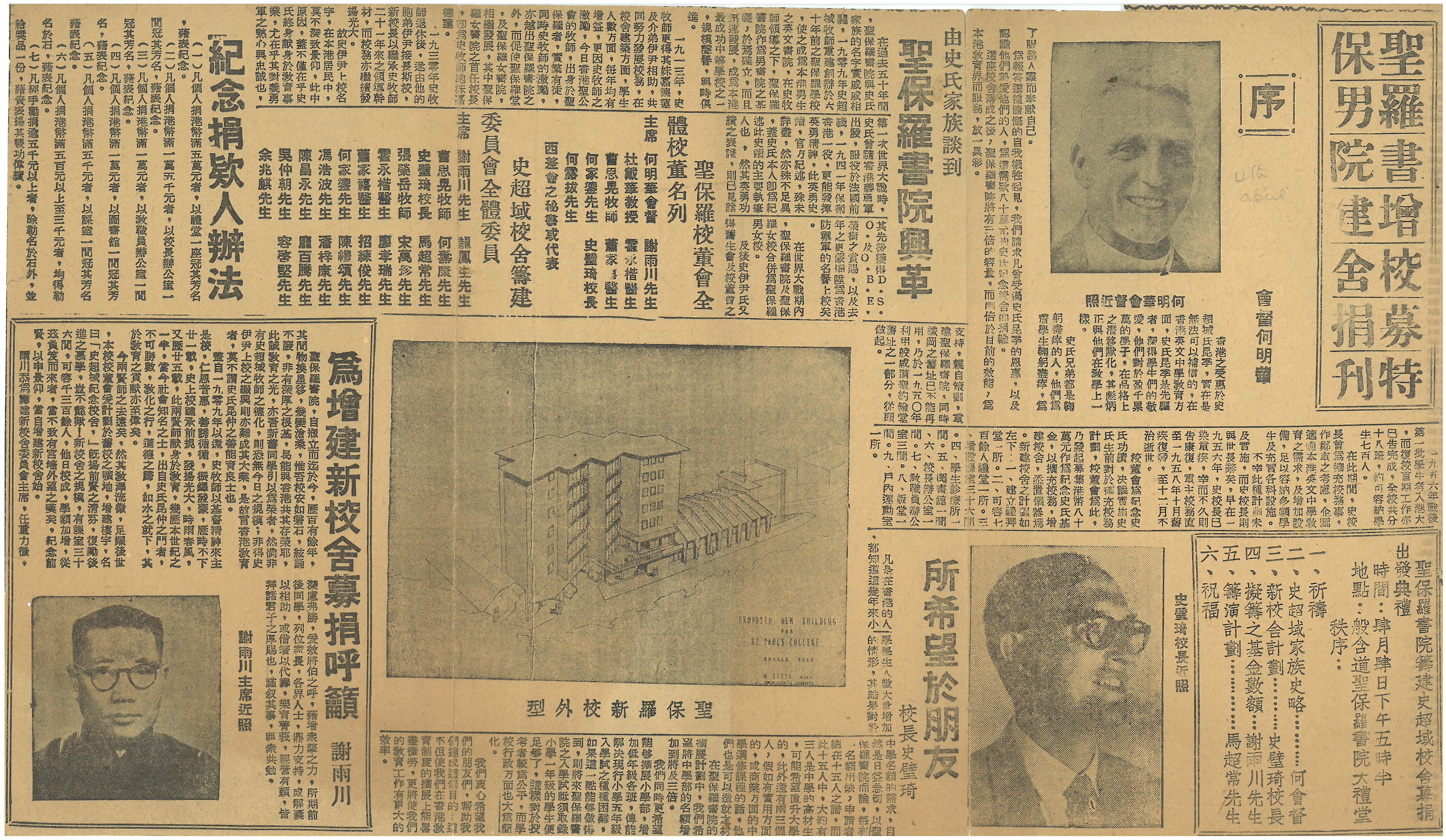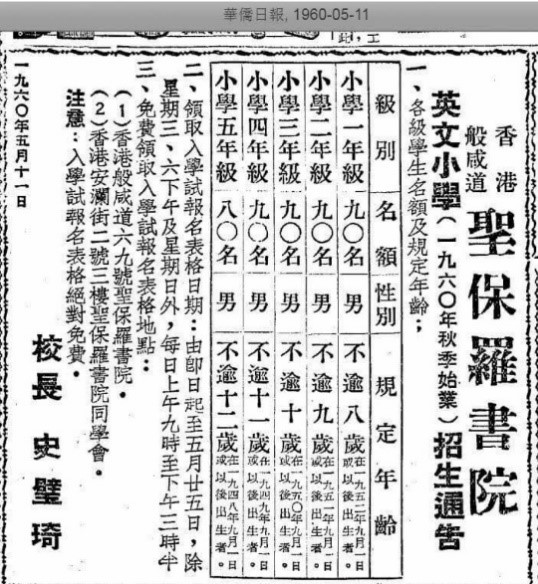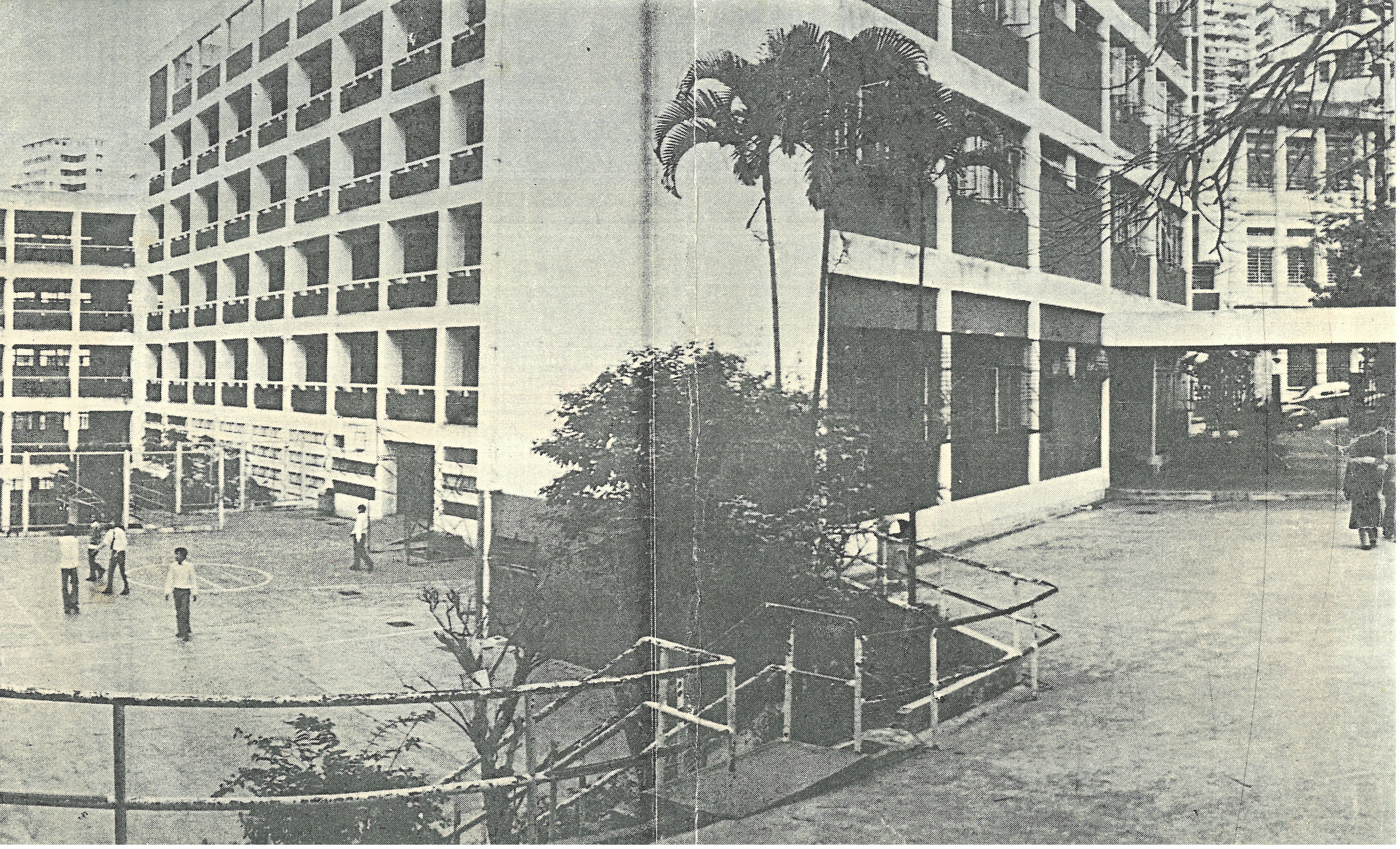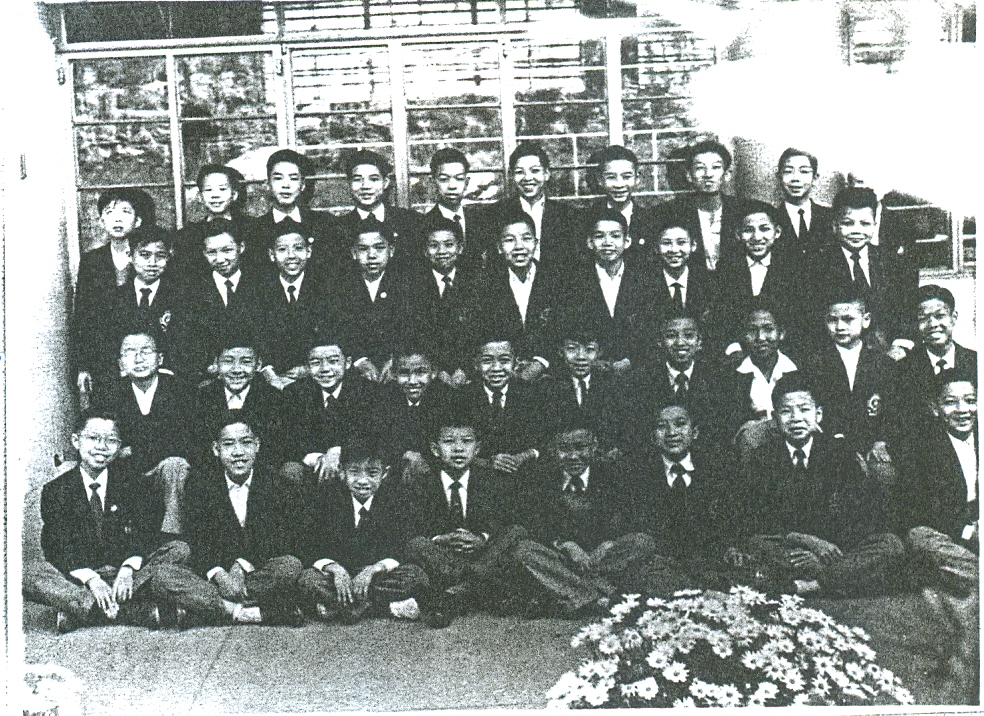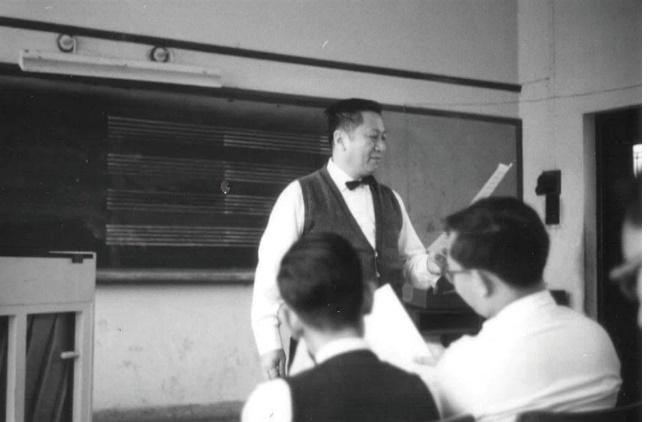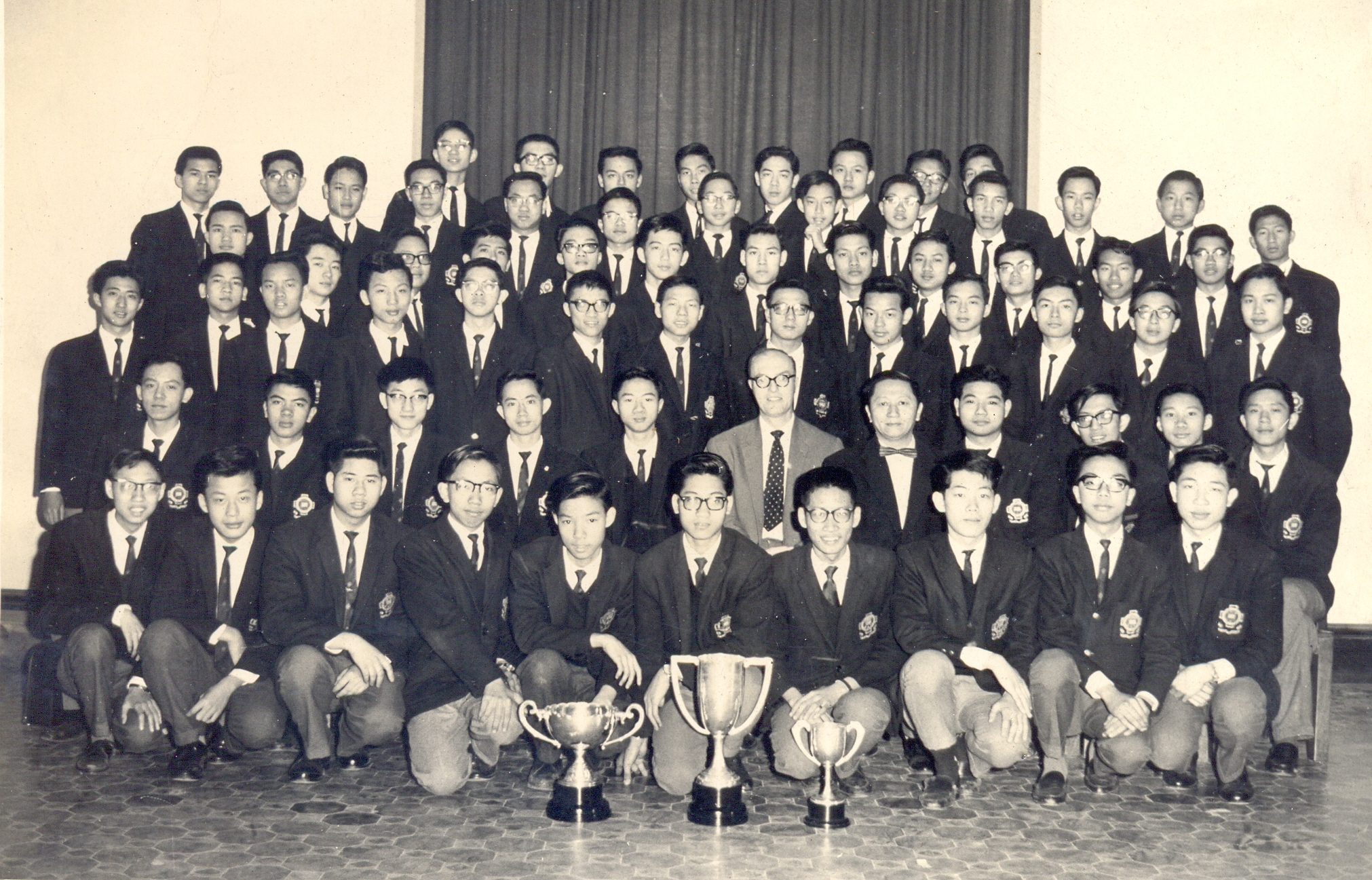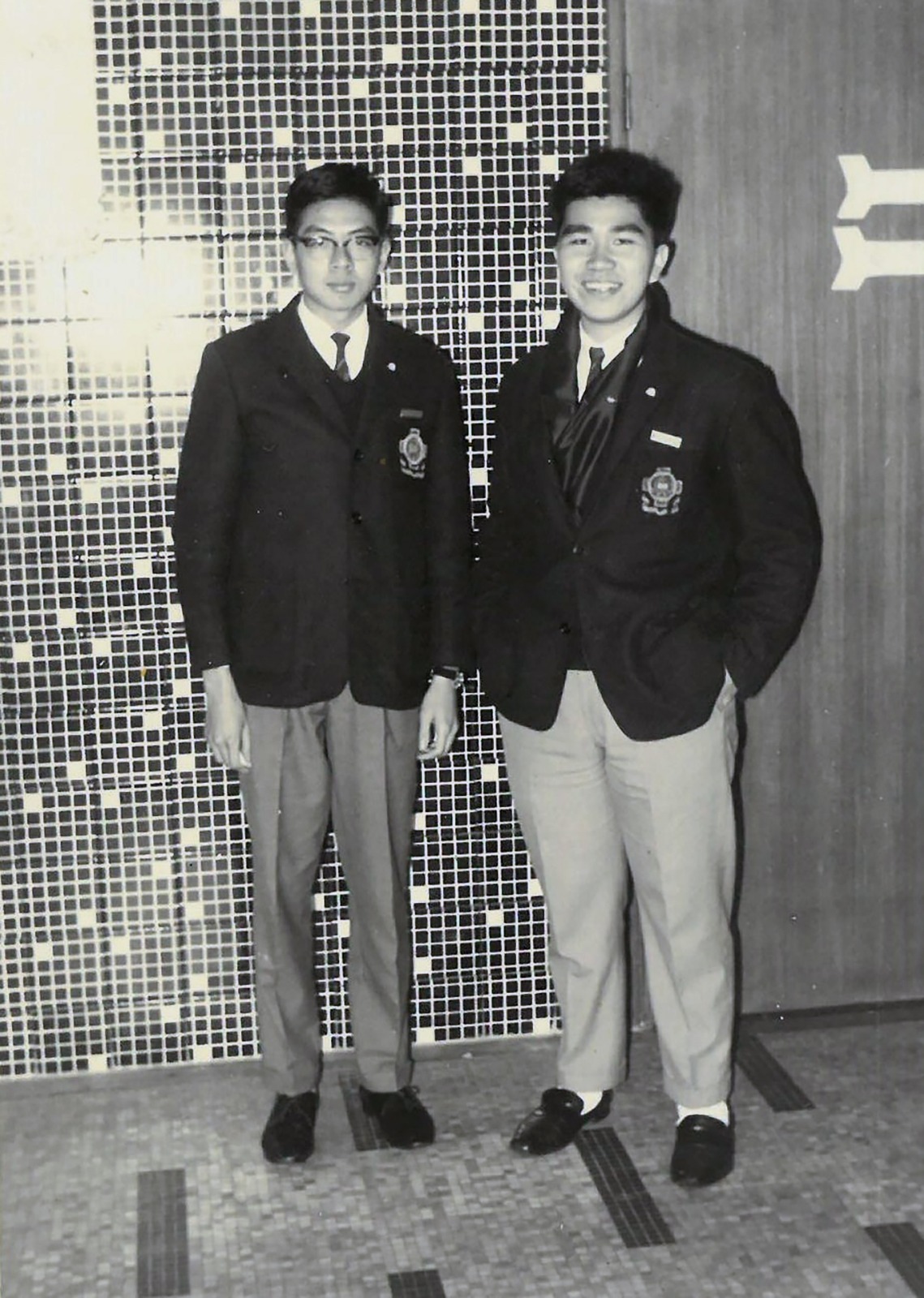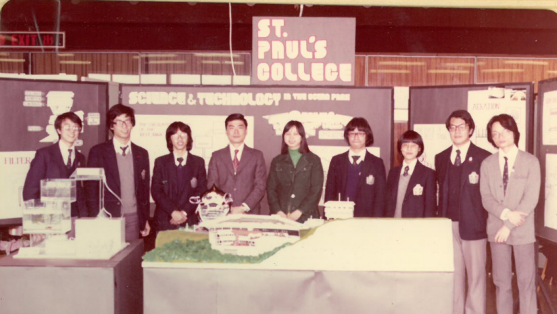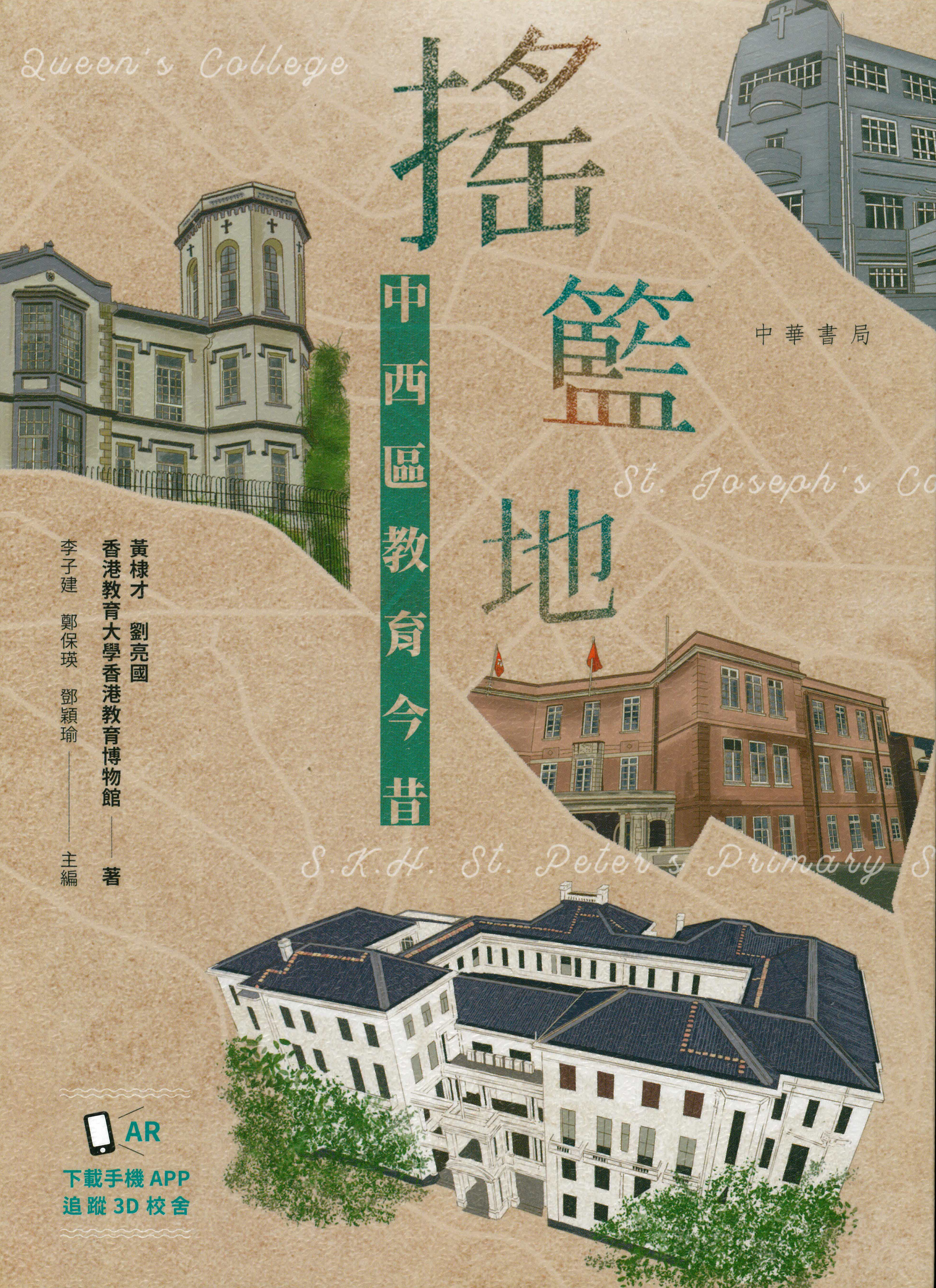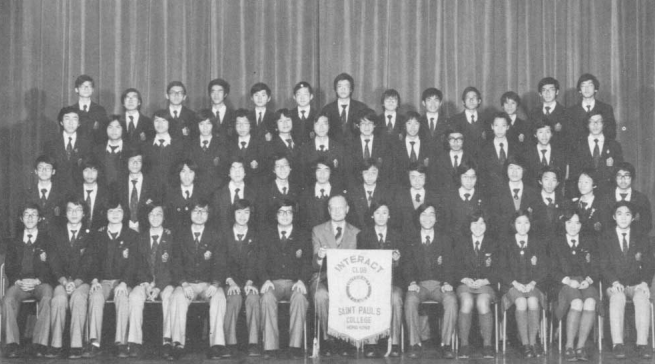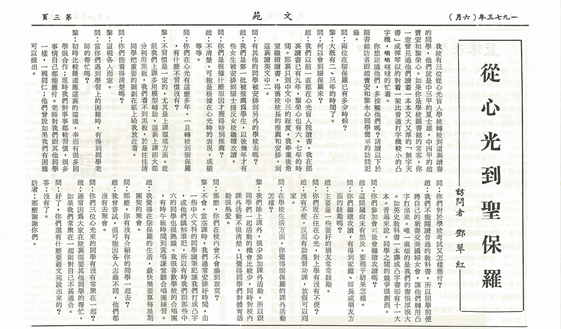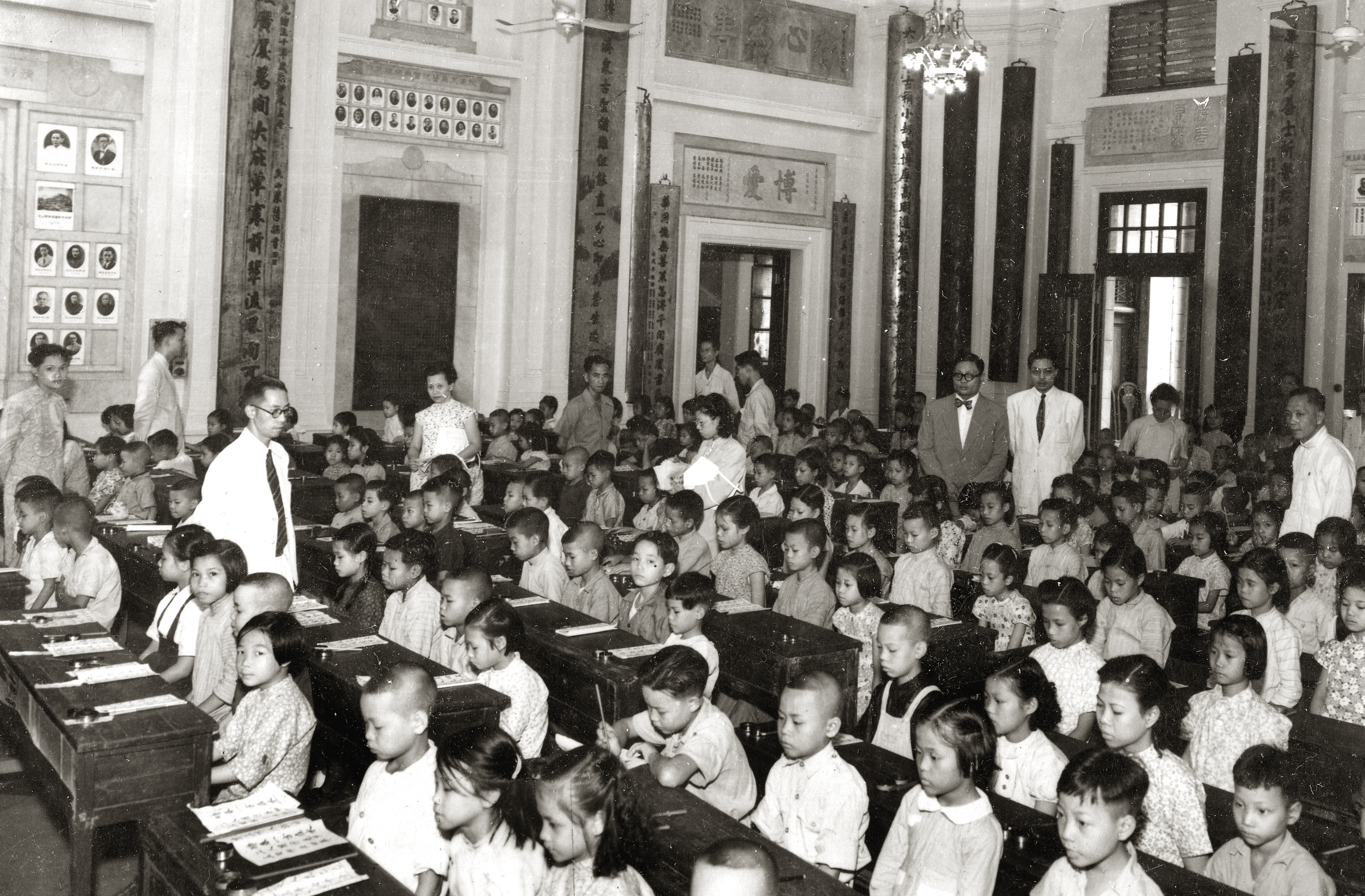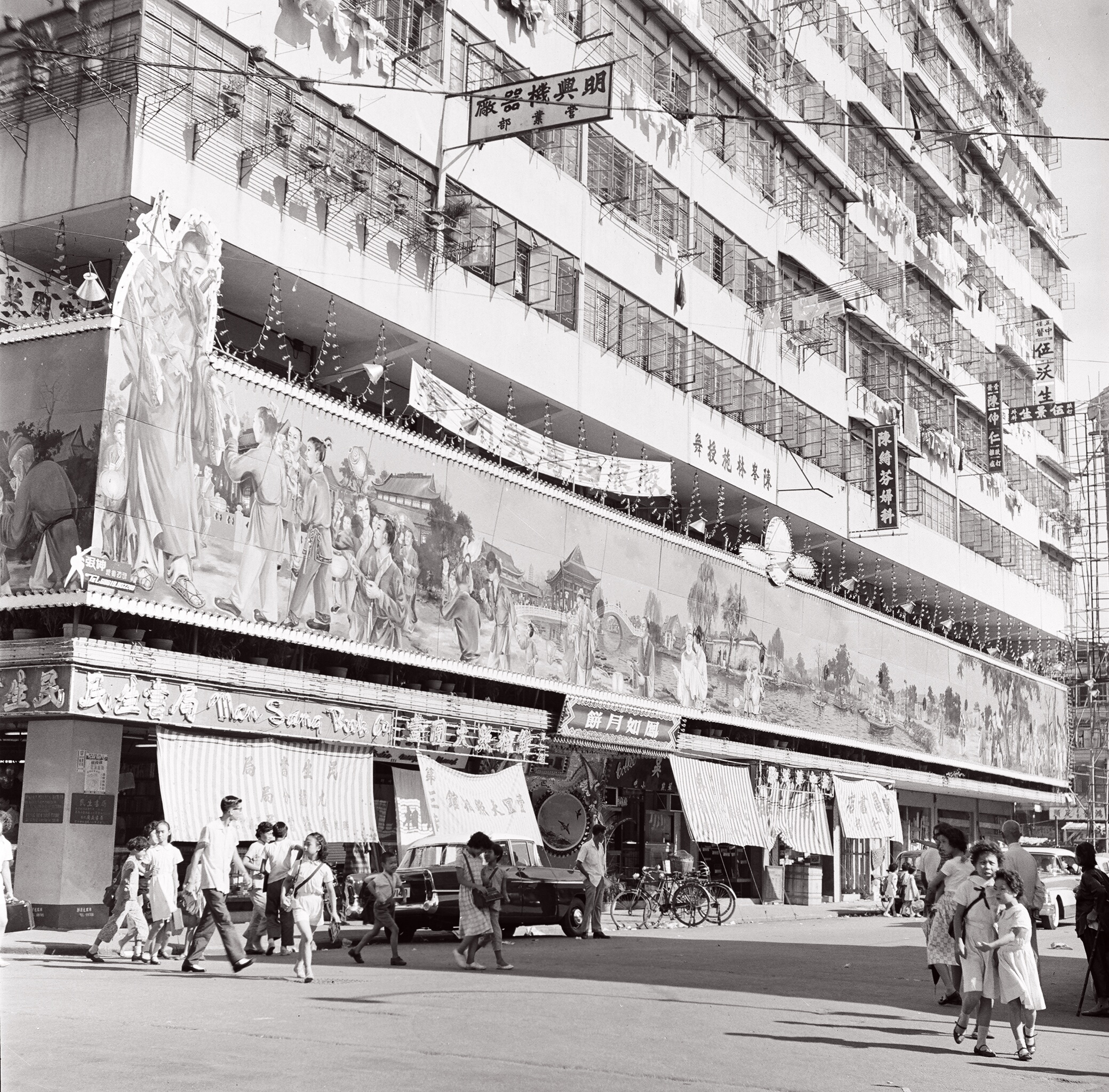History of St. Paul’s College
St. Paul’s College temporarily merged with St. Paul’s Girls’ College to resume classes
After the Second World War, St. Paul’s College was amalgamated with St. Paul’s Girls’ College on MacDonnell Road to temporarily form a co-educational joint college, with elementary and secondary sections and kindergarten classes to meet the surge in demand for education in the post-war era.
St. Paul’s College reopened as a boys’ school
St. Paul’s College reopened as a boys’ school in September, after taking over the former site of HKU St. John’s College on Bonham Road as its new campus.
St. Paul’s English Evening School was established by the St. Paul’s College Alumni Association (SPCAA)
St. Paul’s English Evening School was established by SPCAA to offer opportunities to students requiring education in English. The evening school subsequently came under the management of St. Paul’s College and eventually ceased operation in the 2000s because of the broadening reach of education in Hong Kong.
St. Paul’s College Primary School (SPCPS) was established and the number of classes in the secondary section/division was increased
From the 1910s to the 1950s, St. Paul’s College only offered classes as low as Primary 5. In 1960, the primary classes expanded to a 6-year primary section, and became independent from the secondary section. In the same year, the secondary section of the College began to expand, with the number of Form 1 classes increasing from 2 to 6. Because of the lack of space on the existing school premises, the College underwent a redevelopment project from 1963 to 1969. (The primary section originally shared the Bonham Road premises with the secondary section until 1992, when it moved to Hill Road; in 2013, it moved to its current site on Pok Fu Lam Road.)
St. Paul’s College established various music groups and courses
Mr (later the Revd) Moses Wu helped establish a number of music groups and courses, including the Senior and Intermediate Choirs, the String Orchestra, and classes in violin, music theory, recorder, harmonica, etc., which have won numerous prizes at the Hong Kong Schools Music Festival and other competitions since the 1960s, and have since founded a musical tradition at the College.
St. Paul’s College Students’ Association was established
The College’s Students’ Association was one of Hong Kong’s earlier secondary school student organisations, with the founding aims of promoting extracurricular activities, coordinating existing extracurricular groups, and lending students more autonomy in organising their own activities. Sixty years on, the SA has become an indispensable platform for student clubs. Affiliated clubs cover a wide range of interests, from philosophy to contract bridge; they offer opportunities for joint-school collaboration, encourage students to take their first steps into society, and are constantly inspiring their future paths.
The College co-curated the Joint School Science Exhibition
Students from St. Paul’s College and 9 other secondary schools organised the first Joint School Science Exhibition to promote science education.
St. Paul’s College started admitting girls to its matriculation stream
In response to the under-supply of science matriculation stream at girls’ schools, St. Paul’s College began admitting girls.
Visually impaired students were admitted to St. Paul’s College
St. Paul’s College began to admit visually impaired students from Ebenezer School and Home for the Visually Impaired. As of 2011, a total of 46 students had been admitted. In 2007, the College pioneered inclusive education in Hong Kong by offering an internship for the first visually impaired teacher in Hong Kong.

